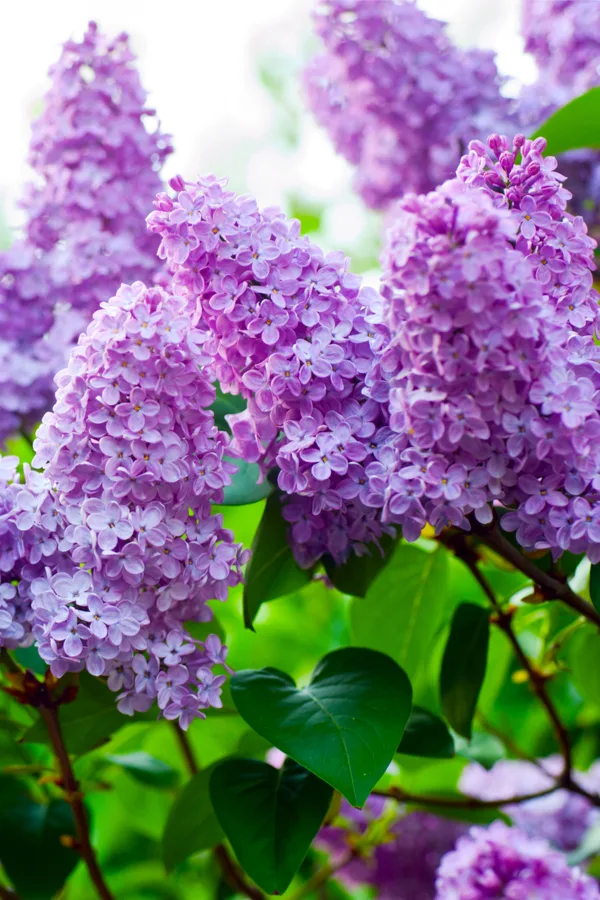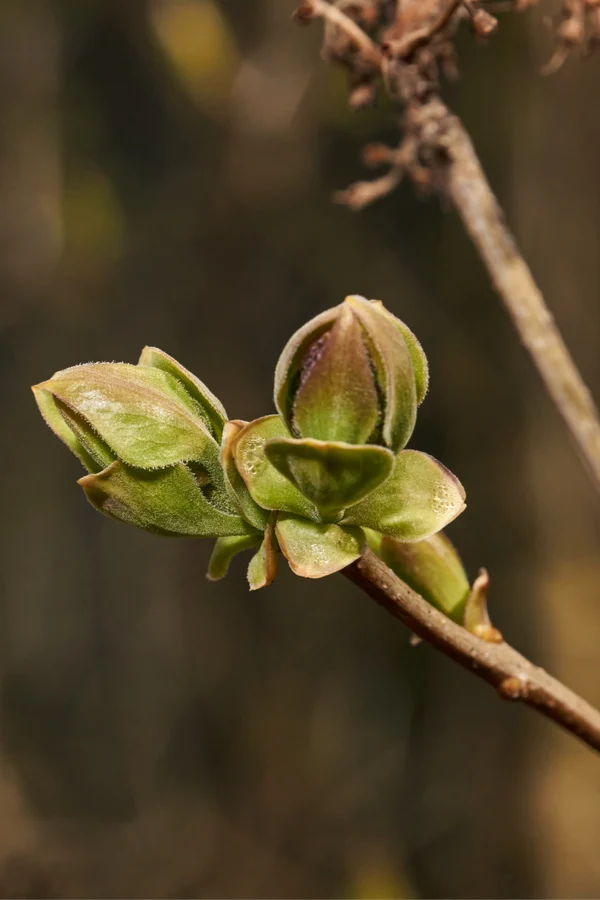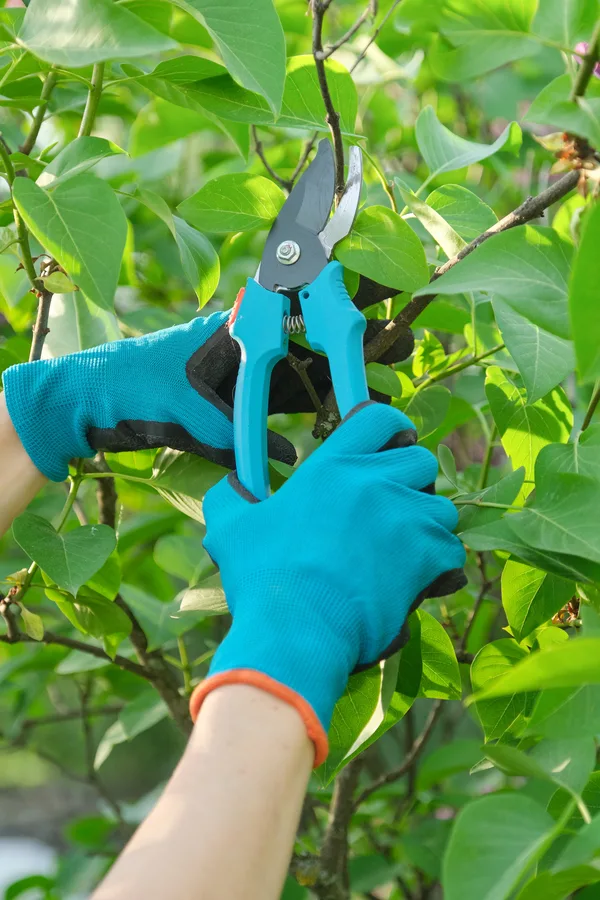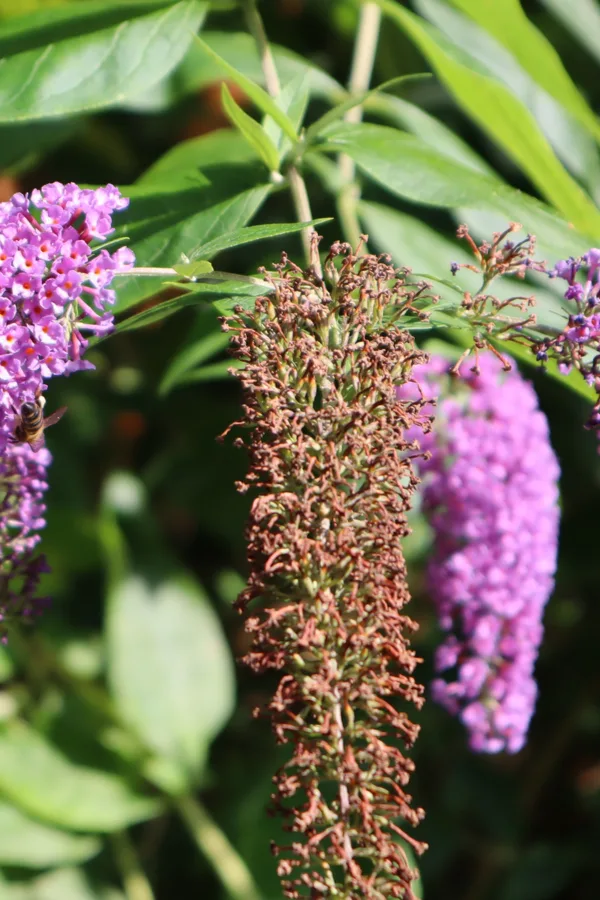Are you looking to get your lilac bushes to bloom bigger than ever this year? Then it is time for a little spring lilac care to get them ready for better health and a great growing season!
Lilac bushes are synonymous with spring color, and lots of it! Although most varieties bloom in a wide array of purple and lavender hues, there are also lilacs that flower in white, red, pink, yellow and even blue.
But no matter the color, they can make quite the statement in the spring landscape. With large, fragrant dangling blooms that fill their entire canopy, lilacs bring massive color to a yard. Even better, they do so for a long period of time. In fact, many lilacs can stay in full bloom for up to two weeks or more each spring!

With all of that beauty, it’s easy to see why they are incredibly popular to grow. Especially when you add in that they are extremely hardy, durable and fairly pest resistant too. So durable that many can grow for up to fifty or more years without issue.
With all of that long-lasting beauty in mind, let’s take a look at how to get the most from this amazing bush, and more importantly, how to ensure that you have the biggest and best blooms each and every spring!
Spring Lilac Care – How To Get Lilac Bushes To Bloom Bigger
Locating Your Lilacs For Success
For starters, lilacs need a fair amount of sunlight to reach their maximum potential. Full sun is always best, but at the least, be sure your lilac bush is growing in an area that receives a minimum of 6 full hours of sunlight each day.
As for soil, lilacs prefer to grow in dirt with a PH that ranges from neutral to slightly acidic (6.5 to 7.0). If your lilac has had issues blooming in the past, a soil that is out of this range can often be the culprit.

To check soil PH, there is no need for an expensive soil test. Inexpensive soil probe PH testers are great for quick soil tests around plants, and can give you a reading instantly.
If your soil is out of the 6.5 to 7.0 range, you can use a soil acidifier to adjust the PH of the soil if needed. If the soil PH happens to be too acidic, you can add lime or dolomite to the soil to help adjust the acidity the other way.
More common is the need to create a more acidic soil. Product Link : Soil Acidifier Additive
Avoid Spring Pruning – How To Get Lilac Bushes To Bloom Bigger
Another issue with lilacs that do not bloom well is they are often incorrectly pruned in the spring.
What you do in late winter and early spring can have a big impact on your lilac’s bloom cycle. Both with this year’s blooms, and for blooms next year as well. For starters, never prune your lilacs in the early spring before they come out. Doing so can actually highly reduce or even eliminate this year’s blooms.

Much like most common varieties of Hydrangeas, Lilacs’ blooms form on older wood and stems. Because of this, removing any stems or branches from the bush before the foliage comes out means you are also removing its future blooms.
The simple rule of thumb is to never prune a lilac bush in the summer, fall, winter or early spring. Instead, only prune lilacs right after they finish blooming. This way, they have the rest of the growing season to produce new growth and new bloom sets for the following year.
Spring Care – How To Get Lilac Bushes To Bloom Bigger
Adding Compost & Mulch
There are two big tasks to perform on your lilac bushes for spring care. The first is adding compost. And the second is applying a thick layer of mulch underneath its base.
The compost will help to power your lilacs with just enough energy for great blooms. If too much fertilizer is given to lilacs it can actually cause them not to bloom. And that is where compost fits the energy needs of a lilac bush to a tea.

Compost has the perfect blend of nutrients to power lilac bushes. But even more, it does so without overpowering them with a full blast of instant energy that can keep blooms from appearing.
For best results, apply the compost in early spring, before the bush begins to leaf out. Spread a few inches of compost around the base of your bush. Use a rake to work it slightly in to the top layer of soil. After adding the compost, water it in to help start leaching the compost’s nutrients into the root area.
Next, apply a thick layer of mulch on top of the compost around the base of the bush. A 4 to 6 inch coating of hardwood or bark mulch will work best. This will help keep competing weeds from stealing nutrients. As mentioned prior, it also helps the soil to retain valuable moisture for the lilac’s roots.
Deadheading Blooms – How To Get Lilac Bushes To Bloom Bigger
When your lilacs begin to bloom, deadheading the flowers as they fade will help the plant immensely. Unfortunately, when allowed to stay on the bush, old blooms will continue to take water and nutrients from the plant.

By removing the blooms as they fade away, you allow the plant to continue to feed the remaining new flowers that are still coming on. But even more, it allows the plant to power new growth during the summer. The result will be an even better bloom set next year!
When your lilac has finally completed its bloom cycle in late spring, it is time to remove the final old blooms and do any pruning or necessary shaping of the bush. By doing this immediately after the bloom cycle completes, the bush still has all summer and fall to grow new wood and limbs for the following year’s flowers.
This is also a great time to add a few more inches of compost. Adding compost to the base will help feed and fuel the bushes summer growth. Just as in the spring, compost feeds slowly, which is perfect for lilacs.
In lieu of the compost, you can give the plant a very light feeding of an all-purpose 10-10-10 fertilizer right after they complete their bloom cycle. Remember, a light application is best as lilacs do not like too much fertilizer.
Late Season Maintenance – How To Get Lilac Bushes To Bloom Bigger
For the remainder of the summer and fall, the two most important tasks for your lilac bush are making sure it is receiving enough water, and keeping the area around its base clear of grass and weeds.
Established lilacs rely heavily on water and moisture for strong growth and health. On average, they should receive around an inch of rainfall per week for best health. If you experience extended drought or dry periods, watering your lilac can pay off big in helping it store up energy for next year’s blooms.

In addition, keep the area underneath your lilac bush free and clear of grass and weeds. Lilacs do not like to compete for nutrients. By mulching around their base and keeping the area free of other growth, it can go a long way in helping them have the energy they need to produce big spring bloom sets.
With this in mind, it is best to mulch around lilacs that grow by themselves out in the lawn. Allowing the grass right around the base means less nutrients for your lilac to bloom.
Here is to getting your lilacs in shape for a big blooming season with a little spring lilac care. And to keeping them healthy and strong for years to come!
Follow Our Facebook Page For Great Gardening Tips And Advice! This Is My Garden Facebook Page
This Is My Garden is a garden website created by gardeners, for gardeners. Jim and Mary Competti have been writing gardening, DIY and recipe articles and books and speaking for over 15 years from their 46 acre Ohio farm. They publish three articles every week, 52 weeks a year. Sign up today to follow via email, or follow along!
